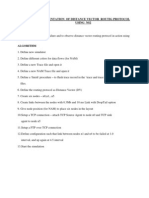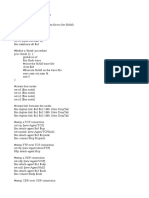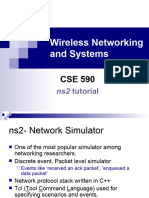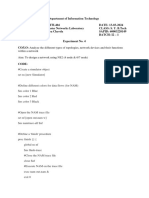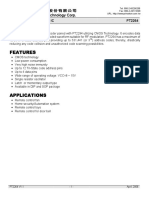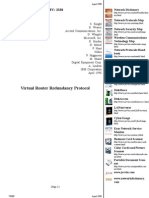0% found this document useful (0 votes)
35 views13 pagesSimulation of Congestion Control Algorithim
The document outlines the simulation of TCP/UDP performance and routing algorithms using the NS2 simulation tool. It details the creation of nodes, links, and agents for both TCP and UDP connections, as well as the implementation of congestion control and routing protocols. The simulation aims to analyze the performance of these protocols under various network conditions and configurations.
Uploaded by
aar55721Copyright
© © All Rights Reserved
We take content rights seriously. If you suspect this is your content, claim it here.
Available Formats
Download as DOCX, PDF, TXT or read online on Scribd
0% found this document useful (0 votes)
35 views13 pagesSimulation of Congestion Control Algorithim
The document outlines the simulation of TCP/UDP performance and routing algorithms using the NS2 simulation tool. It details the creation of nodes, links, and agents for both TCP and UDP connections, as well as the implementation of congestion control and routing protocols. The simulation aims to analyze the performance of these protocols under various network conditions and configurations.
Uploaded by
aar55721Copyright
© © All Rights Reserved
We take content rights seriously. If you suspect this is your content, claim it here.
Available Formats
Download as DOCX, PDF, TXT or read online on Scribd
/ 13
